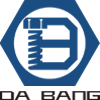DIN444 eye bolts and DIN580 Lifting Eye Bolt are two types of key connectors under German industrial standards, and they play completely different functional roles in mechanical design and engineering assembly. The core feature of DIN444 eye bolts is their articulated head design, which allows ±30° axial swing. This dynamic compensation capability enables them to perform well in scenarios with vibration or displacement. Taking the M20-sized 8.8-grade carbon steel eyebolt as an example, its swing structure can absorb ±20mm position deviation while bearing up to 5 tons of dynamic load. It is widely used in hydraulic connecting rods of construction machinery and shock-absorbing connections of rail transportation equipment.
DIN580 Lifting Eye Bolt focus on the field of static vertical lifting. Its closed ring head adopts an integral forging process to ensure structural integrity during lifting. The M16-sized A4 stainless steel eyebolt has a safe working load of up to 3.2 tons under vertical force. The inner diameter of the ring is designed to be twice the bolt diameter (such as M16 corresponding to 32mm), which is suitable for standard hook sizes. However, it should be noted that when the lifting angle exceeds 15°, its effective load will decay according to the trigonometric function relationship, and the load-bearing capacity will decrease by about 13% when the inclined pull is 30°.
From the perspective of structural technology, the hinged parts of the eye bolts need to be high-frequency quenched, and the surface hardness needs to reach HRC38-42 to reduce the wear rate. At the same time, galvanizing or Dacromet coating (thickness 8-12μm) should be used to improve corrosion resistance. The manufacturing difficulty of eye bolts is concentrated in the transition area between the ring body and the screw. This position needs to be designed with an arc transition with a radius of ≥5mm, and finite element analysis should be used to optimize stress distribution to avoid early failure caused by stress concentration. Both materials are mainly carbon steel (grade 4.8/8.8) and stainless steel (A2/A4), but eye bolts have higher requirements for material fatigue strength due to the presence of moving parts.
|
|
DIN 444 eye bolt |
DIN580 Lifting Eye Bolt |
| Core functions | Dynamic connection / angle compensation | Static vertical lifting |
| Ultimate loads | M20 dynamic load 5 tons | M16 vertical load 3.2 tons |
| Structural weaknesses | Wear on hinged parts | Stress concentration in the transition area of the ring |
| Maintenance priorities | Re-grease every 6 months | Regularly check the roundness error of the ring (≤0.5mm) |
| Cost differences | Unit price 18–22% higher for the same specification | Low processing cost but the lifting equipment increases the total cost |
In engineering practice, live bolts are often used in scenarios that require adaptive adjustment, such as the suspension system of agricultural machinery and the elevation adjustment mechanism of photovoltaic brackets. Their swing function can reduce the risk of fatigue fracture of connectors. eye bolts are mostly used in pure vertical force scenarios such as theater lighting hangers and ship equipment fixation. A typical case is the installation of a port crane maintenance platform: live bolts are used to connect hydraulic lifting mechanisms to compensate for vibration displacement during equipment operation; eye bolts are used to fix safety rope anchor points. The two are used together to take into account both dynamic and static needs.
When making selection decisions, the stress state must be considered: live bolts must be used in scenarios with periodic vibration or displacement compensation requirements; and eye bolts should be preferred for purely vertical lifting and working conditions that require clear load identification. Although the composite designs that have emerged in recent years (such as eye bolts with limit structures) attempt to integrate the advantages of both, due to the lack of standard certification, their reliability still needs to be carefully verified in key projects. From a full life cycle cost analysis, the maintenance cost of using eye bolts in a vibrating environment may be 40% higher than that of live bolts, which confirms the engineering principle of “special parts for special purposes”.
Post time: Apr-18-2025
